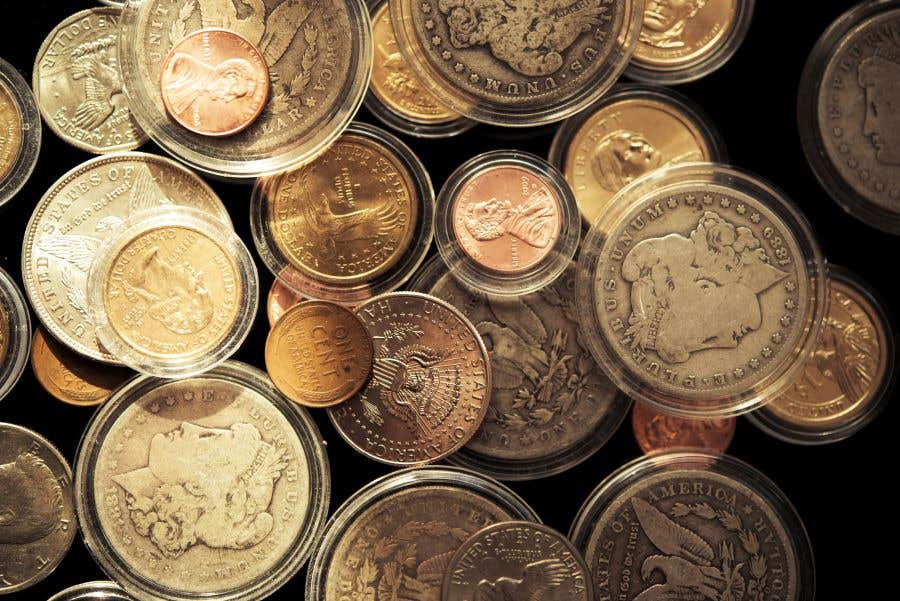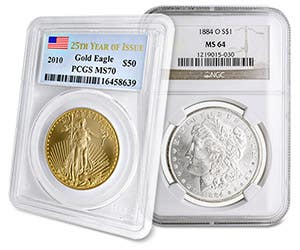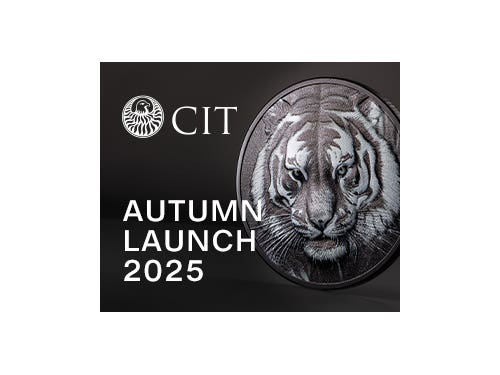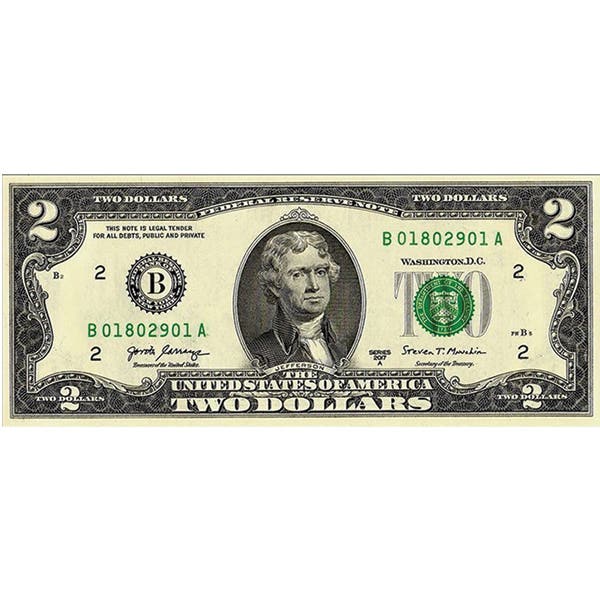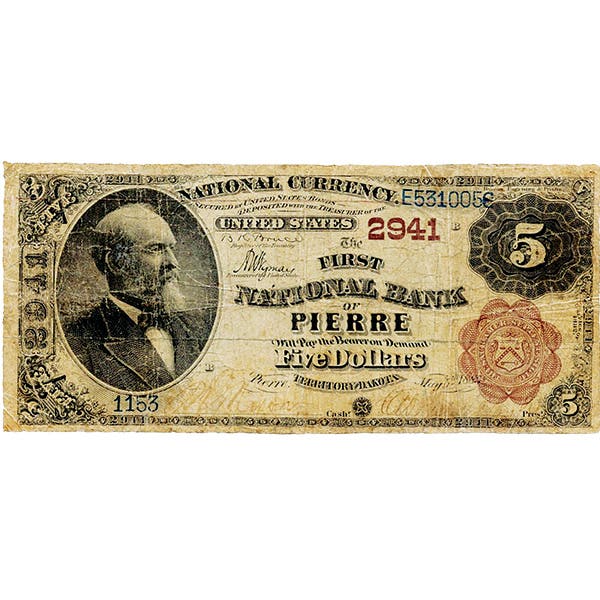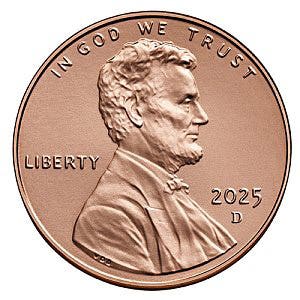Five early commemoratives that may be sleepers
By Mike Thorne, Ph.D. The minting of U.S. coins to honor some person, event or place has a history that can be divided into two parts. There are the early…
By Mike Thorne, Ph.D.
The minting of U.S. coins to honor some person, event or place has a history that can be divided into two parts. There are the early commemoratives, minted from 1892 through 1954, and the modern commemoratives, which began in 1982 and continue to this day.
Among the early commemoratives, there are coins with worthwhile themes, coins with trivial themes, coins with great designs and coins with designs that are less than stellar. Of course, there also coins with good designs but unworthy themes and coins with worthwhile themes but poor designs.
In this article, I’m going to tell you about five (or more) early commemoratives that I feel are sleepers, coins that are presently undervalued, with reasons to increase in value. I’m going to begin with the first of the early commemorative issues.
1. 1893 Isabella Quarter
This coin was the brainchild of Mrs. Potter Palmer, a wealthy Chicagoan. As head of the World’s Columbian Exposition’s Board of Lady Managers, which was formed at the suggestion of Susan B. Anthony, Mrs. Palmer was able to procure $10,000 for souvenir quarters. The quarters gave special recognition to women in a variety of settings.
Designed by Charles E. Barber, the quarter features a left-facing bust of Queen Isabel (or Isabella) of Spain on the obverse. In Encyclopedia of the Commemorative Coins of the United States, Anthony Swiatek describes the coin’s reverse as follows: “A kneeling spinner facing left, holding a distaff (a staff used for holding the flax, tow, or wool in spinning) and a spindle (emblematic of a woman’s industry) in her right hand.” Swiatek notes that the Isabella quarter was the first U.S. coin to depict a foreign ruler and a royal crown, and it was the only commemorative quarter minted between 1893 and 1999. Although the 1932 Washington quarter was intended to be a one-year commemorative quarter, its issue continues to this day.
Of the original 40,000 Isabella quarters minted, nearly 16,000 were eventually returned to the Mint for melting. This leaves a final distribution of 24,214.
According to a recent edition of Numismatic News “Coin Market” (CM), values range from $290 in AU-50 to $1,670 in MS-65. Swiatek says that Isabella quarters in MS-64 “... offer good to very good potential.” CM says they’re worth $785 in this grade. Swiatek also calls attractive MS-65 pieces “... quite desirable and undervalued.”
Because this is an oddball coin in the long series of commemorative U.S. coins that honors a woman and working women in general, I think it’s destined to increase in value. This is particularly the case if, in the not-too-distant future, America elects a female president.
2. 1921 Pilgrim half dollar
This coin was issued to commemorate the 300th anniversary of the landing of the Pilgrims at Plymouth, Mass., in 1620. After sales of the 1920 version of the coin slackened, the Pilgrim Tercentenary Commission asked for another 100,000 coins, perhaps hoping that this would rejuvenate sales. This new issue was differentiated from the 1920 coin by the addition of the date 1921 in relief on the obverse. Unfortunately, sales continued to be poor, and eventually some 128,000 examples were returned to the Mint for melting, leaving a final distribution of just 20,053 of the coins with 1921 on them.
The coin was designed by Cyrus E. Dallin, whose incuse initial “D” appears on the obverse below the figure’s elbow. The figure is William Bradford, governor of the Plymouth Colony. To indicate he’s a Pilgrim, Bradford wears a conical hat and carries a Bible under his left arm.
The reverse features a side view of the Mayflower sailing to the left, with the dates 1620 and 1920 along the lower rim. Swiatek notes that one of the sails on the coin wasn’t actually in use at the time of the Mayflower.
CM values for the 1921 Pilgrim range from $215 in AU-50 to just $300 in MS-65. Surely that makes a coin with this low a mintage one with potential to increase in value. Indeed, Swiatek calls the coin in MS-65 “... somewhat undervalued at current levels.” That makes it a winner in my book, and if you can find one anywhere near $300, a bargain as well.
3. 1925-S California Diamond Jubilee
The California commemorative is a coin with a fairly large distribution. Although 150,000 were minted out of 300,000 authorized, nearly 64,000 were melted, producing a net distribution of 86,394. That’s a large number for an early commemorative, but it’s worth noting that California is the most populous state in the nation. Given the size of the population, any increase in interest in the history of the state, particularly of the Gold Rush period, might spark increased interest in this coin.
The California commemorative was issued in recognition of the 75th anniversary of the state’s admission into the union. Designed by California sculptor Jo (Joseph Jacinto) Mora, the coin’s obverse features a prospector panning for gold while appearing to look at the motto “In God We Trust.” Perhaps he’s praying that he will find something worthwhile.
On the reverse, there’s a grizzly bear walking to the left. The grizzly is emblematic of California’s independence from Mexico. Designated the state animal in 1953, by the time of the California commemorative, the animal had been hunted to extinction in the state.
CM values the California commemorative between $200 in AU-50 and $450 in MS-65. That’s a fairly tight range of values, and it suggests to me that you should opt for a higher-graded piece rather than settling for either a circulated coin or one in a lower Mint State grade.
Swiatek writes, “Strictly graded MS-66 and MS-67 coins are undervalued.” According to a recent issue of the Coin Dealer Newsletter, California commemoratives in these grades have wholesale values of $700 and $1,250, respectively. Although these are fairly hefty prices, they are probably worth it for a coin with several reasons to go up in value.
4. Stone Mountain Memorial half dollar
This is going to strike you as an odd choice given the number of these distributed (1,310,000), but the coin has a lot going for it. For one thing, it has an interesting design by Gutzon Borglum, the American sculptor famous for his Mount Rushmore figures. Although Borglum was employed to carve the coin’s obverse figures on Georgia’s Stone Mountain, he was dismissed after a dispute with the Stone Mountain Confederate Monumental Association. Another sculptor (Augustus Lukeman) was hired to complete the project.
The obverse pictures two soldiers on horseback, General Thomas (a.k.a. Stonewall) Jackson and General Robert E. Lee. The reverse is dominated by an eagle standing on a mountain crag, its wings spread. The eagle overlooks an inscription that reads, “Memorial to the Valor of the Soldier of the South.”
As you would expect, the Stone Mountain half dollar is extremely popular in the South, and virtually every collection I’ve appraised had at least one example. Most of these have been well circulated. Because of the large number minted and distributed, values of the coin are quite modest relative to most other early commemoratives. In CM, the range of values is from $60 in AU-50 to $195 in MS-65.
Swiatek says that “... the coin is not difficult to locate in grades up to MS-66. Collectors should attempt to procure the flashier, eye-appealing coin, but only for the joy of collecting. Only the loftier grades are likely to increase in value.”
How high do you have to go? Swiatek sees “good to very good future potential” in flashy MS-66 coins, which have a wholesale value of $200 in the CDN. “Pieces grading MS-67 ... presently offer very good to excellent future potential, provided they possess that all-important flash or eye appeal.” Obviously, we’re talking about coins certified by either NGC or PCGS, perhaps with CAC (Certified Acceptance Corporation) certification as well. CDN gives a wholesale value of $650 for the Stone Mountain half dollar in MS-67.
5. 1936 Battle of Gettysburg half dollar
Sticking with the Civil War theme, I’ve selected the Gettysburg half dollar. This is a coin with a distribution of only 26,928 pieces out of a mintage of 50,028. It commemorates the 75th anniversary of the Battle of Gettysburg, which occurred in early July 1863. However, as Swiatek points out, the coin “... was authorized in and dated 1936, and minted in 1937 for the Blue and Gray Reunion celebration, which took place July 1, 1938.”
Designed by Pittsburgh sculptor Frank Vittor, the obverse design depicts two soldiers, one Union and one Confederate. Below their busts are the words “BLUE AND GRAY REUNION.” On the reverse are two shields, one for each of the two armies. The shields are separated by a double-bladed fasces.
As for the coin’s potential, Swiatek says, “... any future potential begins with attractive pieces grading MS-65+.” CM assigns a value of $720 to the Gettysburg in MS-65.
Swiatek writes, “In MS-66 condition, the coin is undervalued, especially captivating specimens ... There is excellent future potential at this level and for Gettysburgs rated MS-67 and loftier.” CDN records wholesale values of $1,000 and $2,550 for Gettysburgs in MS-66 and MS-67, respectively.
6. 1937 Battle of Antietam half dollar (bonus coin)
Here’s another Civil War commemorative with the potential to increase in value. Like the Gettysburg coin, the Antietam half dollar was supposed to commemorate the 75th anniversary of the battle it’s named after. The fight at Antietam occurred on Sept. 17, 1862, and is recorded as one of the bloodiest single-day battles of the war. The final distribution of the commemorative was 18,028.
Like the Gettysburg coin, the obverse of the Antietam commemorative depicts a pair of soldiers, one from the North and one from the South. These aren’t enlisted men, however: they’re two of the war’s most well-known generals. On the left is General George McClellan, who commanded the Union forces in the battle, and on the right is General Robert E. Lee, the Southern commander.
The reverse shows Burnside Bridge across Antietam Creek. The bridge was a major tactical objective of the battle. The bridge was later named after the Union commander (General Ambrose Burnside) of the troops seeking to capture the bridge and win the battle. The coin’s design was by Baltimore sculptor William Marks Simpson.
You’ve heard of sideburns? According to Wikipedia, General “Burnside was noted for his unusual facial hair, joining strips of hair in front of his ears to his mustache but with the chin clean-shaven; the word burnsides was coined to describe this style. The syllables were later reversed to give sideburns.”
The Antietam has a very narrow range of values from AU-50 to MS-65, rising only $70 for this rather wide range of grades ($530-$600). Obviously, you should spring for the higher grade if you have a choice.
According to Swiatek, “Collectors should buy these ratings [MS64-66] only for the joy of collecting. However, continuous demand for the MS-66 coin will make its values rise.” He goes on to note that Antietams in MS-67 have “... real future potential.” Wholesale values in the CDN are $600 in MS-66 and $950 in MS-67.
That’s it for my list of five (actually six) early commemoratives with good potential to increase in value. They all have interesting designs and worthwhile themes, unlike coins such as the Cincinnati Music Center commemorative or the coin commemorating the 300th anniversary of the founding of York County, Maine.
Many of the early commemoratives have great designs, honor worthwhile themes, and have quite low mintages. Check them out, and I’ll bet that you, too, can find coins with potential.
Happy hunting!
This article was originally printed in Coins Magazine. >> Subscribe today.
More Collecting Resources
• Liked this article? Read more by subscribing to Numismatic News.
• Are you a U.S. coin collector? Check out the 2019 U.S. Coin Digest for the most recent coin prices.




